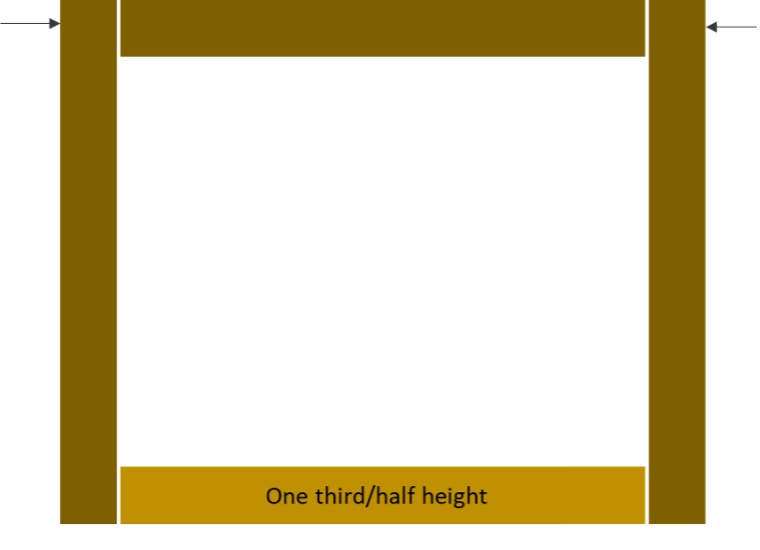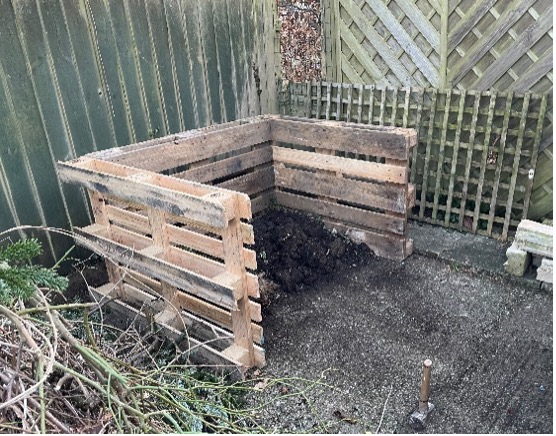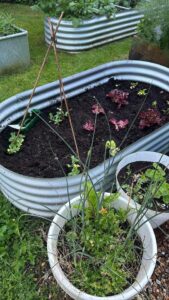Thinking of making your own composter? This can be a faster and cheaper way than buying an off-the-shelf option. It also allows you to create something that reflects the space you have available and the amount of green waste you’re likely to produce.
The best option for making a composter at home is to use pallets or sleepers; pallets are the cheaper, easier-to-source option. They’re also pressure-treated for outdoor use and the slats allow air to pass through – which is an important element to help your compost. If using pallets, you ideally want the same size and style.
Industrial estates or building sites may have stacks and sometimes will be grateful to donate them to you!
Sleepers work just as well and are more aesthetically pleasing, but they do come at a cost. That said, you can sometimes find piles of ex-railway sleepers for sale or free through Network Rail – although you will need to collect them. The risk with sleepers comes if they’re old tar coated timbers. This tar, and other historically used chemicals, can leach back into the soil meaning you won’t be able to grow fruit and vegetables. The key is to be sure you check what you’re buying.
What you will need for your composter
- 3 – 4 pallets
- Large 4-6 inch nails or screws
- Polythene sheet
DIY composter steps
Making a composter is relatively easy. Here is a birds-eye-view example of what it should look like:

Let’s break down the steps:
Step 1:
Arrange three pallets, standing on their sides to create a U shape. The rails used by the forklift trucks should be on the outside of the U.
Subject to the pallets you’re using, you may need to place your two side walls onto the rail ends of the back wall, so you can fix through them into something solid.
Step 2:
Using the long nails or screws, connect your side walls to the back wall. You will need four fixing points on each side for strength.
Step 3:
Cut a fourth pallet down so that it has at least two forklift rails – this may mean you cut it to a third or half its normal size.
Step 4:
Fix your low wall (half/third height) pallet to the front of your composter. This will provide access to the compost for digging and turning but also retain the pile.
Step 5:
Fill your composter with cuttings, layering grass, soil and larger offcuts wherever possible.
Step 6:
Lay a thick black polythene sheet over the top of the pile to promote warmth in the pile.

Two-bay composter
Having a two-bay composter makes it easier to turn over your compost as you can move your compost between the two composters. If you have the material and room, then you just repeat this process and add another composter on the side, or forego the side wall and use a single pallet as a partition.
Garden composting tips and tricks
There are some simple tips and tricks you can do to help ensure your garden composting is a great success.
- Use the right materials: Use a mix of green materials, such as grass, fruit and veg peelings, weeds, and brown materials such as dried leaves, straw, hedge trimmings, and cardboard.
- Keep it moist: During hot summer months, add a little moisture to help it along a bit – but don’t waterlog the pile. Make sure it is covered during the wet seasons.
- Turn regularly: Turn your compost several times a year to ensure air is getting to it and to ensure it isn’t too compacted.
We’ve put together a more thorough blog post on how to make garden compost. This is packed with more in-depth tips and tricks on how to make your own compost at home.
Earth Cycle compost
Home composting is a fantastic way to keep a regular supply for your home garden to keep pots topped up and plants healthy. But if you need some compost a little quicker, then we have plenty of high-quality composts available. Order your bulk bag for free UK delivery today!




